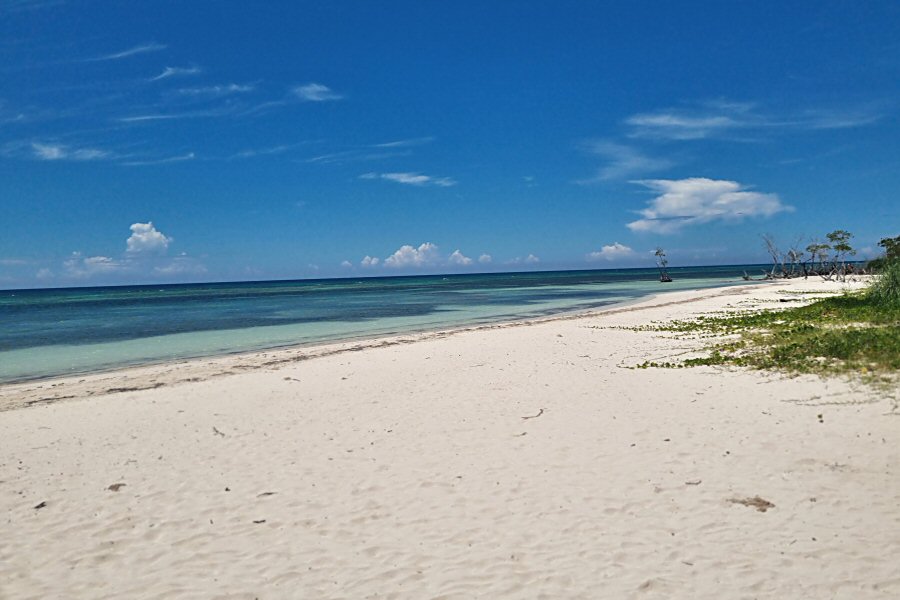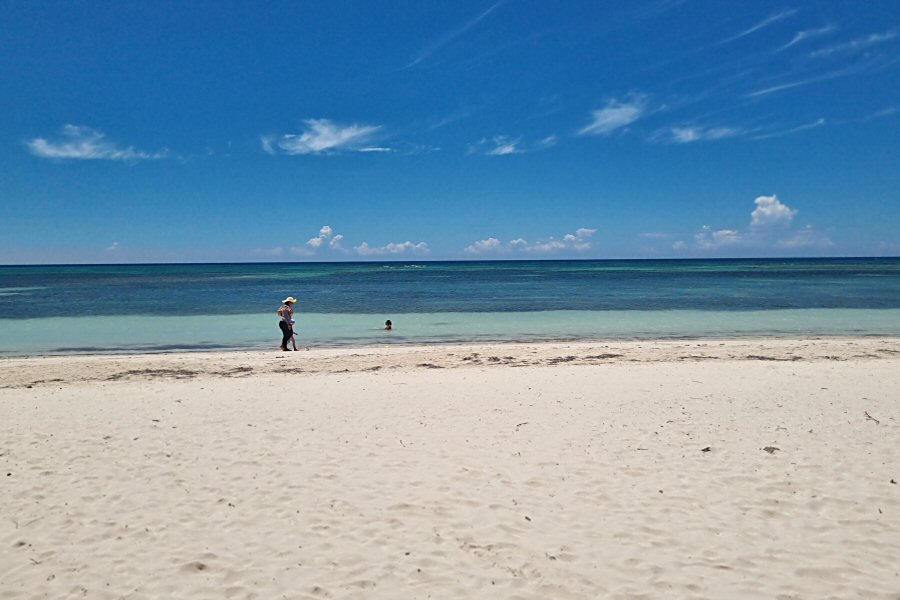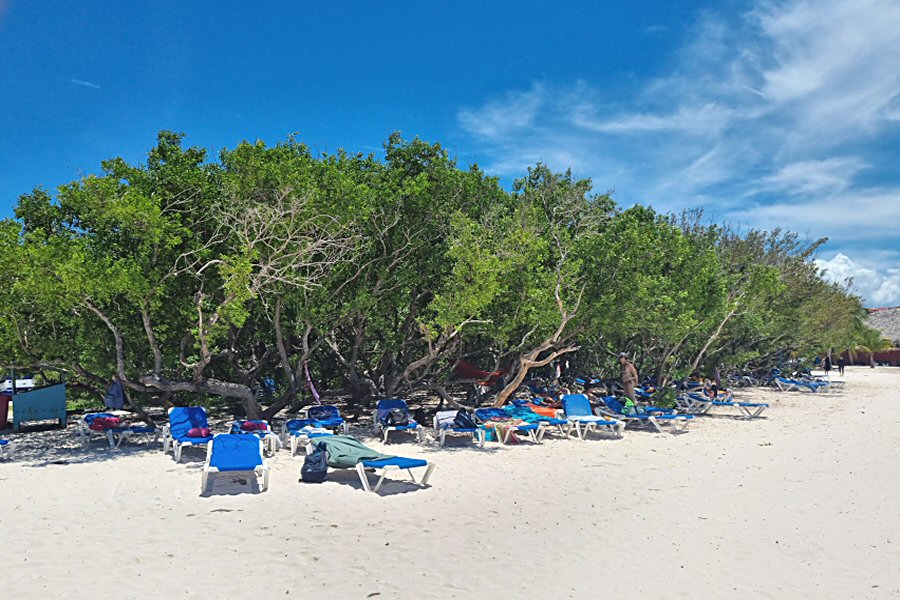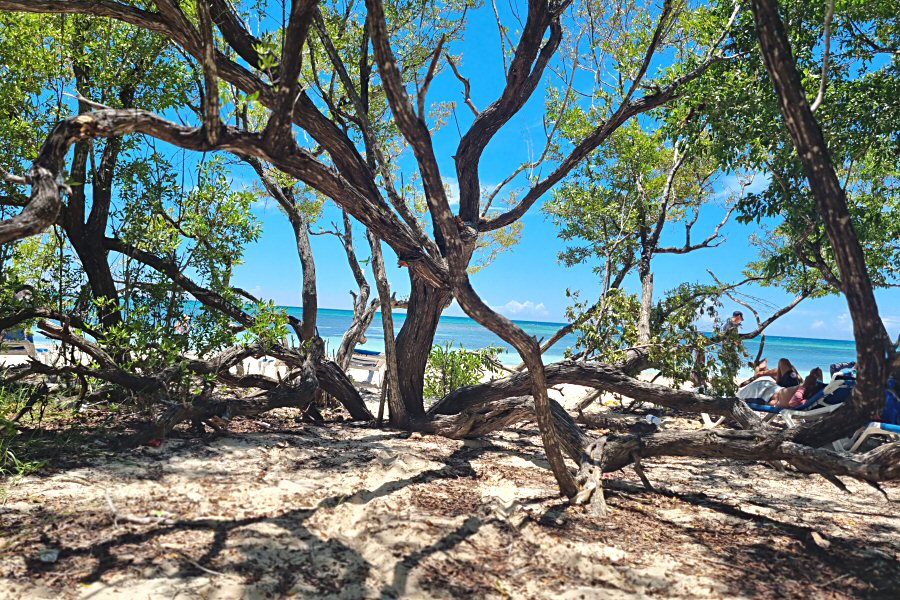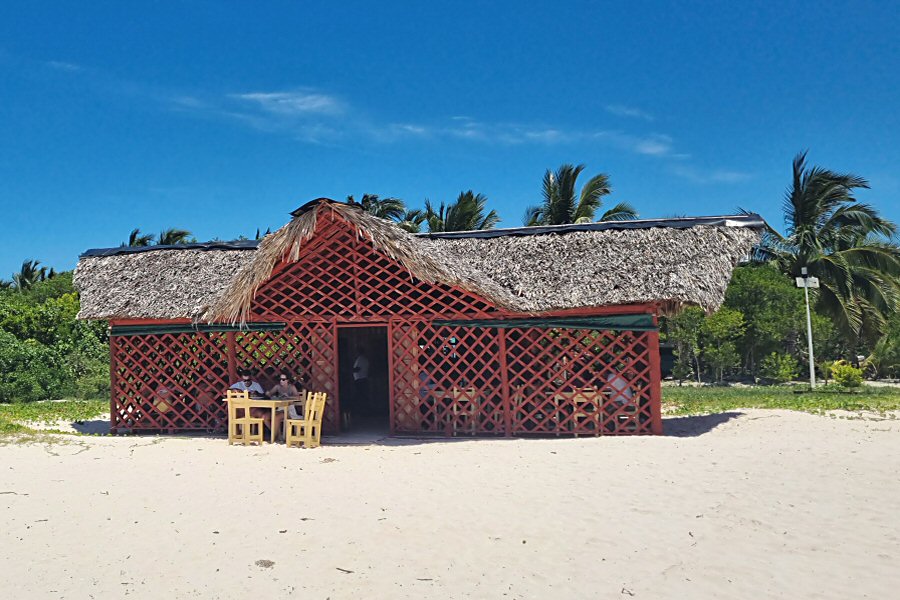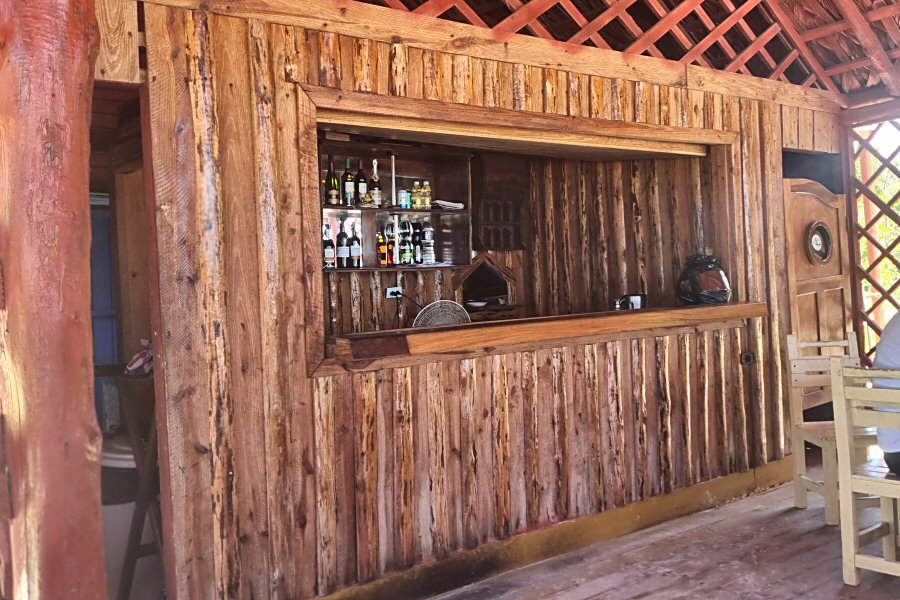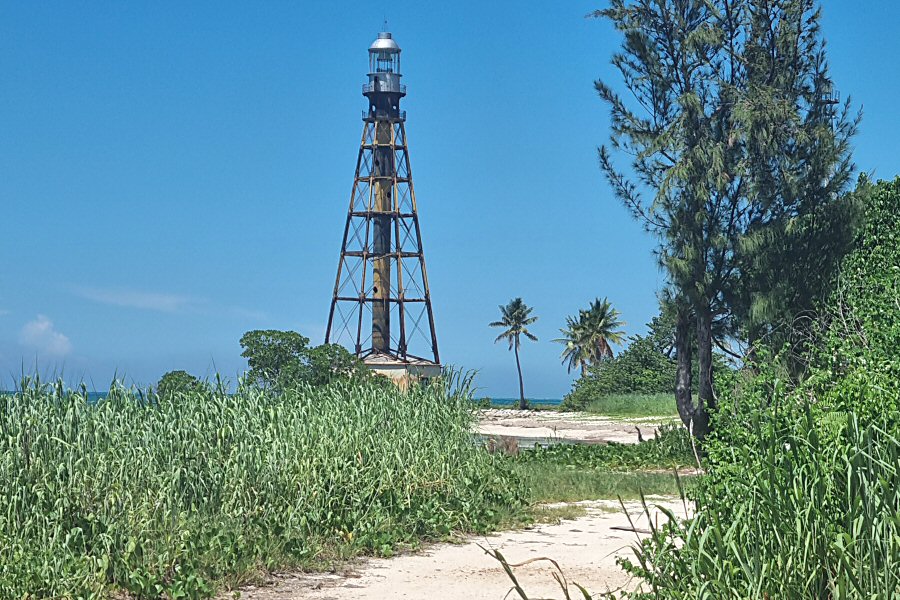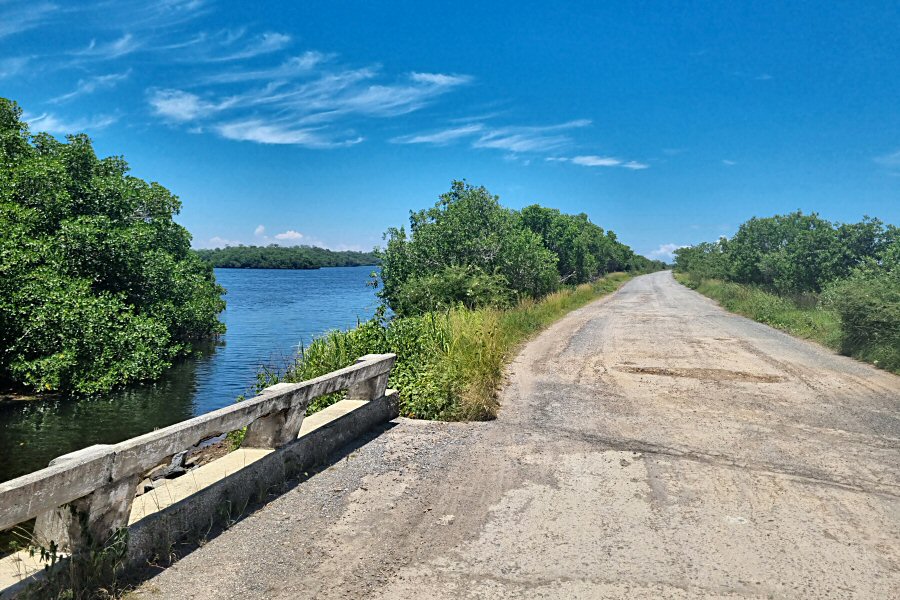Localization
Cayo Jutías can be reached from both Minas de Matahambre and Viñales - San Cayetano. Both roads are equidistant and equally potholed and rough.
Opening Hours
the restaurant:
every day 09:00 - 18:00
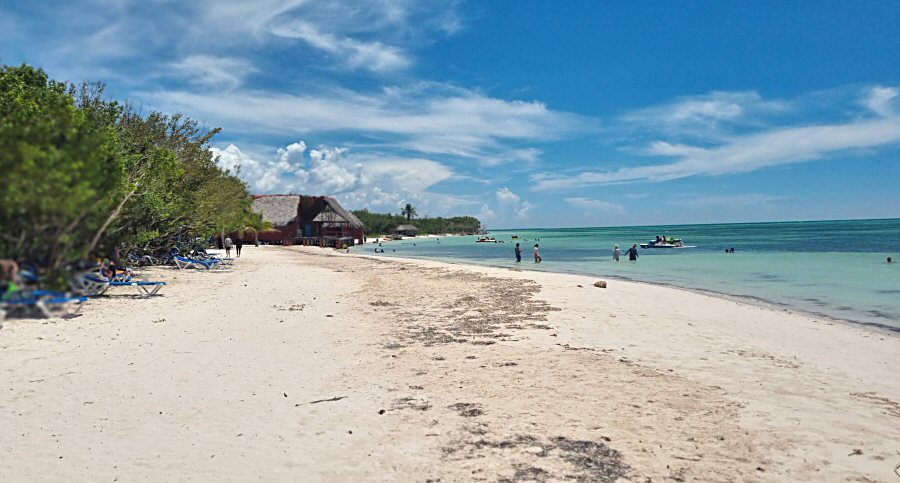

Cayo Jutías is an island jutting into the sea between the Cove of Nombre de Dios (Ensanada Nombre de Dios, Cove of the Name of God) and the Bay of Santa Lucía (Bahía Santa Lucía). As a thin, arc-shaped peninsula is forming around the entire northwest corner of the island, it appears like a boomerang. This narrow, winding stretch is home to idyllic Jutías Beach, famous for its white sand.
This island which has an area of approximately 4 square kilometers, is connected to the mainland by a road that sits on an embankment, serving as a bridge. A sandy, low-lying island that is formed on coral soil and connected to the mainland by a road, as we know them in northern Cuba, are classified as cayos. They are very common throughout the Caribbean and the Antilles Sea. Cayo Jutías is one of the main cayos in the Archipelago of the Colorados.
Administratively, it is part of the municipality of Minas de Matahambre, in the Province of Pinar del Río.
Undoubtedly one of the main reasons to visit Cayo Jutías is its virgin beaches with extensive white sands and turquoise waters. The waters around the beach are considerably shallow and clean, offering a peaceful and safe day out for families with children. Another important feature of the beaches is that they provide a calm and quiet resting opportunity. When the sun goes down, the turquoise waters of these beaches gradually turn pink, generating a palette of pastel shades worth seeing. However, because the road is in very bad condition, you have to leave the island at 16:00 at the latest.
It is an ideal place for snorkeling as well as diving safely. For diving excursions you will need a boat transfer which you can get from the cabin next to the restaurant.
Since construction is not permitted on this cayo, there is no accommodation facility on the island, but there are some private houses (casa particulares) on the Santa Lucía road. The most logical approach is to take the 1.5-hour, rough road to reach Jutías beach after spending the night tin Viñales and exploring the valley.
However, there is a restaurant where you can get food and beverage support, enjoying a nice day at the beach. Sun loungers are provided for free.
At the far end of the cay, at its western end, is another excellent beach (Playa las Estrellas, Stars Beach), accessible only by boat. This name was given to the beach due to the abundant presence of starfish in its waters which makes it an ideal place for snorkeling.
The coastline is filled with numerous mangrove trees, dead and alive. The alive ones provide excellent shady place.
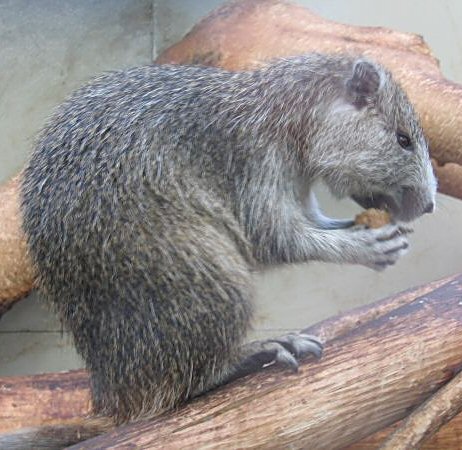 Cayo
Jutías owes its name to a rodent called “Jutía” that inhabits in
trees. The jutía is a medium-sized, guinea pig-like rodent found
in the Caribbean islands. Twenty species of jutía have been
identified, but at least half are extinct. Most species are
restricted to Cuba, but are also known to occur throughout the
Greater Antilles, the Bahamas, and (formerly) Little Swan Island
off the coast of Honduras.
Cayo
Jutías owes its name to a rodent called “Jutía” that inhabits in
trees. The jutía is a medium-sized, guinea pig-like rodent found
in the Caribbean islands. Twenty species of jutía have been
identified, but at least half are extinct. Most species are
restricted to Cuba, but are also known to occur throughout the
Greater Antilles, the Bahamas, and (formerly) Little Swan Island
off the coast of Honduras.Most species are herbivorous, but some consume small animals. Instead of nesting underground, they nest in trees or rock crevices.
In Cuba, they were hunted for food and were often cooked in a large pot with wild nuts and honey.
